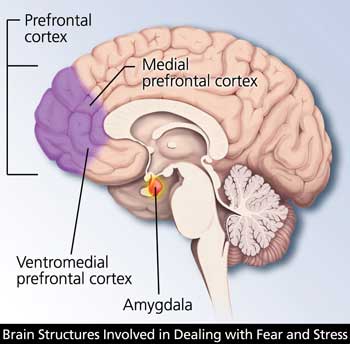Move a muscle, change a thought.
Paola is a successful attorney. She knows that her health is a key component to her success and working out has immediate benefits. She committed to going to the gym on Friday morning. Her work was light and the kids were at school.
Her amygdala said, “You should keep working on this brief.”
Her prefrontal cortex spoke up. “Go. You promised yourself you would go. Your thinking is clearer and you have more stamina after a workout.” She pushed through the amygdala’s discomfort. “Ugh. OK.”
Your brain is wired to resist change. The amygdala is the portion of the brain that reacts negatively to uncertainty and risk. It’s great in times of crisis, but lousy at supporting you taking new, positive actions. “If I do this behavior – take time to eat healthfully, exercise, go to the movies – I risk missing out on a business opportunity (safety and security). I may lose my job and end up on the streets.”
The prefrontal cortex is the executive part of the brain. It counterbalances the amygdala. “Your clarity and confidence increases after a workout. You get great ideas walking on the treadmill. Successful leaders take the time to exercise regularly and you’re a successful leader.”
Paola drove to the gym while her amygdala kept grumbling at her. “Are you sure you can afford this time away from work? You can go to the gym tomorrow. It seems a bit self-indulgent to go on a Friday morning. What if you see someone you know there?” She walked into a spin class and within two minutes was too busy trying to keep up that she forgot all about work and wasting time.
At the end of the class she thought about her experience. “I guess my amygdala will always be uncomfortable doing this activity. Thank goodness for my prefrontal cortex.”
Act on your commitment not your feelings.
© Lethbridge & Associates LLC. All Rights Reserved.





